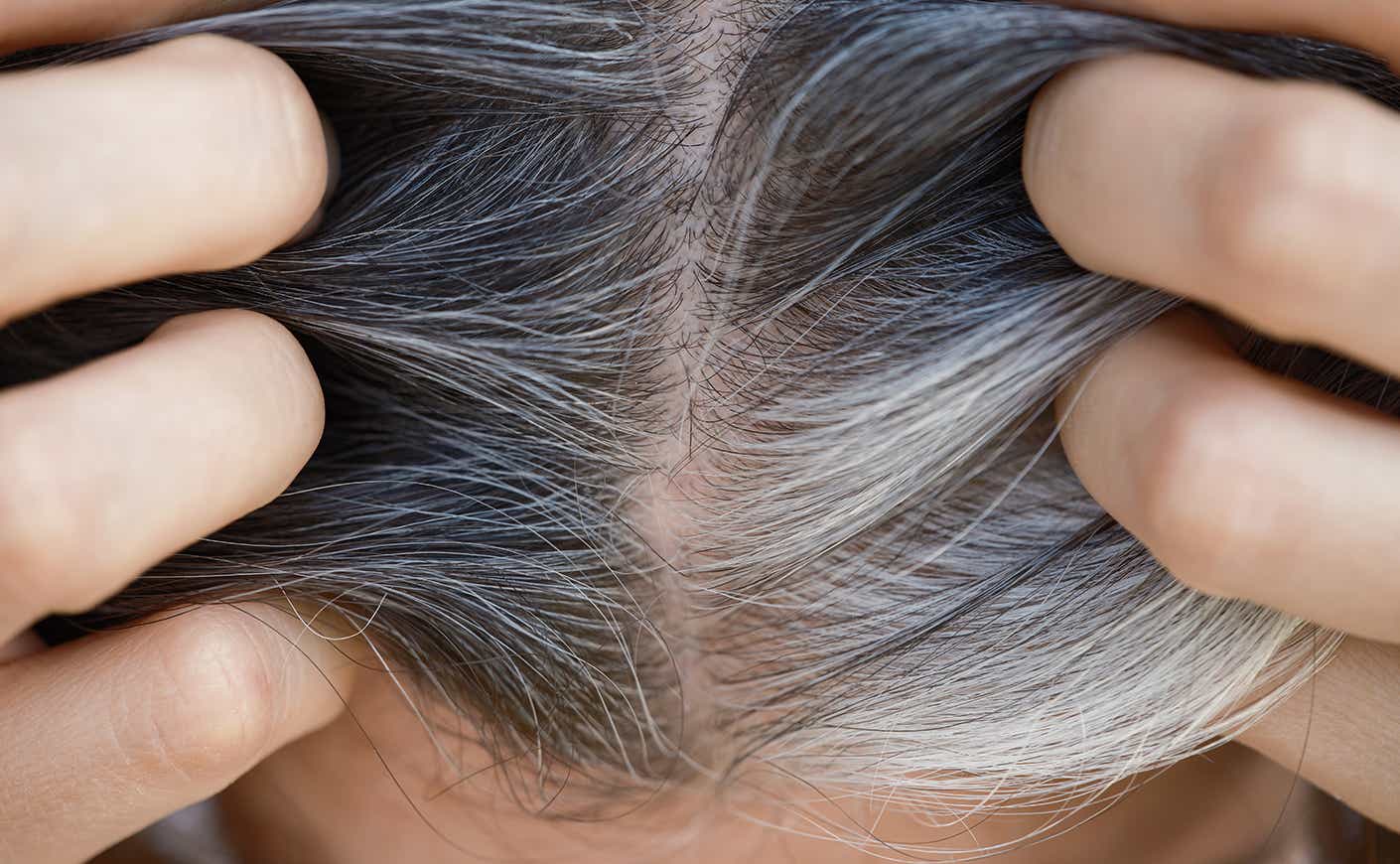Gray hair is one of the most universal signs of aging — but what causes it in the first place? Researchers at the New York University Grossman School of Medicine believe they may have finally discovered the reason behind this natural phenomenon.
According to their findings, published in scientific journal Nature, color-producing stem cells become stuck in the hair follicle as a person gets older, causing us to become silver foxes (or vixens). “This is a really big step toward understanding why we gray,” said study senior investigator, Mayumi Ito, in a press release.
In turn, this discovery is now prompting hope about the potential development of a treatment to halt or treat gray hair, something that’s becoming more embraced in recent years, particularly among celebrities like Andie MacDowell. “I felt more powerful and I felt more genuine. I felt more myself,” she told Katie Couric in an interview last month about her decision to let her silver strands shine through.
So what are the implications of this study? We have more details on the study and what it means for future developments.
Why do we get gray hair?
Hair color is determined by melanocyte stem cells that multiply inside hair follicles, which then get signals to mature and make proteins that produce melanin or hair color, according to previous research. But as we get older, these melanocyte cells in our hair follicles start to die, causing strands to lose their pigment and make them appear white or gray. For most people, this process starts to happen in their 30s, although some may start to notice gray hairs in their late 20s.
What did the study find?
While we understand why we go gray, New York University research may have just discovered why our melanocyte cells die in the first place — other than aging itself.
Their study focused on cells in the skin of mice that are also found in humans called melanocyte stem cells, which are responsible for producing and maintaining the pigment in our hair. Over time, researchers noticed that melanocyte stem cells get trapped in a part of the hair follicle called the hair follicle bulge, which prevented them from creating color.
“It is the loss of chameleon-like function in melanocyte stem cells that may be responsible for graying and loss of hair color,” Study senior investigator Mayumi Ito said in a press release.
While the study was conducted with rodents, researchers say their findings do shed light on how human hair gets and loses its color. “Our study adds to our basic understanding of how melanocyte stem cells work to color hair,” said another one of the study’s investigators, Qi Sun. “The newfound mechanisms raise the possibility that the same fixed-positioning of melanocyte stem cells may exist in humans.”
Can gray hair be reversed?
As it currently stands, no. But, following the stem cell study, researchers say the next step is figuring out how to free those stuck cells and turn back the graying process.
“Our study suggests that moving melanocytes to a proper location within the hair follicle may help prevent hair greying,” Ito wrote.
In the meantime, there may be some ways to avoid going gray prematurely. For instance, a 2013 study found that smokers on average went gray three years earlier than non-smokers (scientists suspect that smoking causes chemical changes in the body that damages our melanin-producing cells).
In some cases, such as people who are experiencing stress, gray hair can actually be stopped in its tracks — at least temporarily. According to a 2021 study, people who reported a reduction in stress, like going on vacation or overcoming a nasty divorce, saw their hair regain its pigment. But don’t put away your box dye just yet — once hair grows out of the scalp, it doesn’t change color (it’s just the new growth at the root that can regain its pigment).
Hair is not only a sign of aging or our psychological state. It can also provide valuable clues about our overall health and recent insights into stem cell function might help researchers understand other diseases like cancer. “I think sometimes people take the hair for granted,” Melissa Harris, a biologist at the University of Alabama, told The New York Times. “But in a sense, it makes it actually really easy for us to see potential ways in which aging or other perturbations affect our bodies.”









